Tools¶

Wire Stripper¶
The wire stripper is used to remove the outer plastic insulation of wires. There are two types of wire strippers: handheld strippers and ratchet strippers. To use the handheld stripper, place the wire into the appropriate groove, squeeze the handles and pull on the wire to remove the plastic insulation. If you’re having trouble removing the plastic, try going down one gauge and try again. To use the ratchet stripper, place the wire in the space under the metal blades and then squeeze the handles all the way through until the handles releases itself.

Soldering Iron¶
The soldering iron is used to join two or more items together with solder (melted metal). To use this, first heat up the soldering iron and obtain some solder. Second, Carefully use the heated tip of the soldering iron to melt some solder onto the desired area of choice. An example is melting some solder on a wire to join two wires together. Make sure to not use too much solder so that the solder forms a solid connection. If desired, cover up the soldered area with heat shrink or electrical tape.

Crimper¶
The crimper is used to combine a connector and a wire together through compression. To use the crimper properly, first place the stripped ends of the wires you would like to connect inside of the connector. Next, find the gauge of the connector and place it into the appropriate groove. Last, squeeze them like scissors.
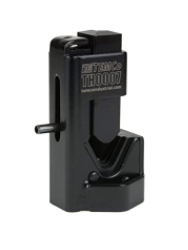
Hammer Crimp Tool¶
The hammer crimp tool is used to join a metal crimp with a wire. To use this tool, first place metal crimp along with the wire inside of the crimp in the bottom “valley” of the tool. Next, start hammering on top of the tool, smushing the metal and creating a solid connection on the wire. Make sure to hammer down the whole crimp, it should look uniform when done.
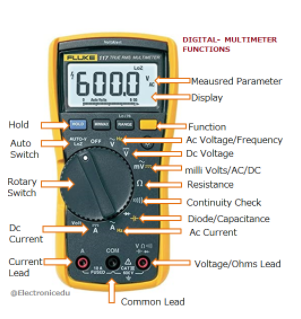
Multimeter¶
The multimeter is used to measure various values such as voltage, current, and resistance. It consists of the physical multimeter and 2 probes. Note that we only use the DC voltage and resistance values. To use the multimeter, first turn the dial to what value you want to measure, then plug the cables into the correct holes at the bottom of the multimeter. Keep in mind that you will always plug a cable into the middle hole, but there are different holes for measuring current/voltage/ohms Finally, put the probes on what you want to measure, make sure you match the ground and positive values correctly on what you are measuring.
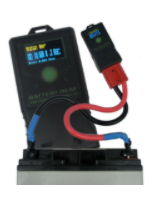
Battery Beak¶
A battery beak is used to check various stats of the battery, including internal resistance, charge %, and general status. Make sure that batteries for competition pass these criteria: * Resistance (“Rint”) must to be <0.2; ideally, competition grade batteries * Should be around 0.10-0.19 * “Status” must be “Good” (obv) * If charge is not over 100% (ideally 120%, which is the max), make sure to charge them before any competition matches For testing the robot and such, you don’t need the full 120% charge. For testing, make sure to use crappy batteries that have too high of an internal resistance that they’re not good for competitions. You can find specific instructions here. Video coming after we get back to the makerspace
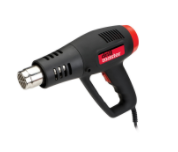
Heat Gun¶
Heat guns are very hot hair dryers used to shrink the heat shrink tubing. Make sure that there are no flammable objects nearby the heat gun when in use.
Utilities¶
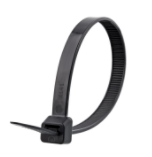
Zip Ties¶
Zip ties are used to quickly join or attach objects together. They can come in multiple lengths and sizes. If the zip ties are too short, you can connect multiple zip ties together to create a “zip tie chain”.
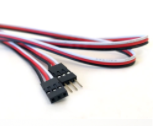
PWM Cables¶
PWM is short for Pulse Width Modulation. These cables send signals to microcontrollers with different pulse lengths. They are used to connect certain sensors to the roboRIO (RIO has a couple of PWM ports)
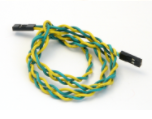
CAN Wires¶
CAN means Controller Area Network. They allow microcontrollers to communicate with each without a computer (roboRIO). They are used to connect RoboRIO, PCM, speed controllers, PDP
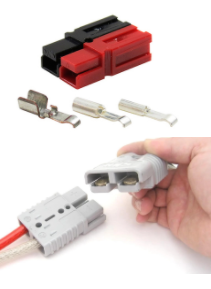
Anderson Connectors (mini and regular)¶
Anderson connectors are used to connect wires to one other through small insulated housings.They can also be used as the connecting plug from the battery to the robot. To use the connectors, start by placing the stripped ends of the wires you would like to connect in the metal Anderson contact. Next, crimp the wire to the contact securely for good circuit connection. Finally, fit/slide the wire and metal contact into the connector housing.
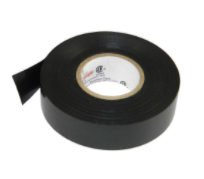
Electrical Tape¶
Electrical tape is used to cover/insulate exposed wires. It can patch up and secure small wire-connected areas. It can be used for any number of things, however. You can color code the positive and ground with red and black tape.
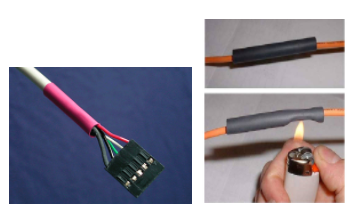
Heat Shrink Tubing¶
This tubing is a useful alternative to electrical tape. Once heated up, the tubing shrinks around the wire and provides insulation and some protection from the environment. There are different diameters of tubing, so make sure to choose the correct size for different wire gauges.